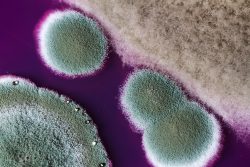Mold Growth in Your Crawlspace – Causes and Preventive Measures
September 8, 2023 6:27 pm Leave your thoughts
Causes of Mold Growth in Your Crawlspace:
1. Excess Moisture:
One of the primary causes of mold growth in your crawlspace is excess moisture. This can be due to a variety of reasons such as poor ventilation, water leaks, or high humidity levels. When moisture accumulates in the crawlspace, it creates a favorable environment for mold to thrive.
2. Groundwater Seepage:
Another common cause of mold growth in your crawlspace is groundwater seepage. If your crawlspace is not adequately waterproofed or if the area around your home lacks proper drainage, groundwater can infiltrate the crawlspace. This constant exposure to moisture promotes mold growth and can lead to severe structural damage if left untreated.
3. Plumbing Leaks:
Leaking pipes or plumbing issues are a significant contributor to mold growth in crawlspaces. Even minor leaks can create a moist environment, providing an ideal breeding ground for mold. Inspecting and fixing any plumbing issues in your crawlspace can help prevent mold growth.
Preventive Measures:
1. Improve Ventilation:
Proper ventilation is crucial for keeping your crawlspace dry and mold-free. Ensure that there is adequate air circulation by installing vents or vent fans. This will help reduce humidity levels and prevent moisture from accumulating in the crawlspace.
2. Install a Vapor Barrier:
A vapor barrier is a moisture-resistant material that is installed on the ground or walls of your crawlspace. It helps prevent moisture from seeping into the crawlspace and reduces the risk of mold growth. Consider using a thick plastic sheet or a specialized vapor barrier to protect your crawlspace.
3. Address Water Leakage:
Inspect your crawlspace regularly for any signs of water leakage or plumbing issues. Repair any leaking pipes or fixtures promptly to prevent moisture buildup. Additionally, ensure proper grading around your home to direct rainwater away from the foundation and crawlspace area.
4. Maintain Proper Insulation:
Proper insulation in your crawlspace can help regulate temperature and humidity levels. Insulate the walls and floor of your crawlspace using insulation materials such as spray foam or fiberglass batts. This will help prevent condensation and reduce the likelihood of mold growth.
5. Professional Mold Inspection:
Regular mold inspections by professionals can help identify any existing or potential mold problems in your crawlspace. These experts can assess the condition of your crawlspace, identify moisture sources, and recommend effective mold removal and prevention methods.
Conclusion:
Mold growth in your crawlspace poses a significant threat to both your health and the structural integrity of your home. By understanding the causes of mold growth and implementing preventive measures, you can ensure a mold-free environment in your crawlspace. Proper ventilation, moisture control, plumbing maintenance, and professional inspections are essential steps to prevent mold growth and protect your home. Take proactive measures today to safeguard your crawlspace and maintain a healthy living environment.
Got Questions? Let Us Help!
Categorised in: Mold
This post was written by admin
